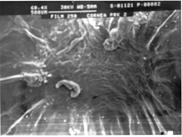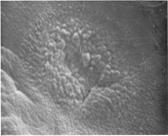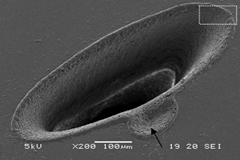

|
To contact us: |
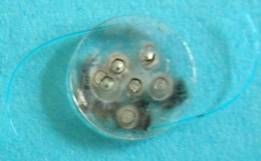
|
Figure 1. Intense thermal damage of silicone IOL ablation craters after Er:YAG laser radiation. |
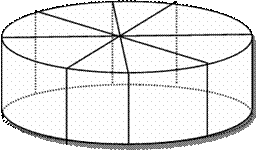
|
Figure 2. A proposed pattern for formation of sliding levels with the use of laser ablation. |
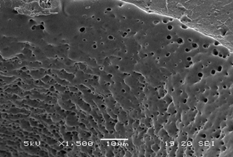
|
Figure 3. (a) SEM image of the ablation crater in a PMMA intraocular lens (ARTISAN Aphakic, 18.00 D). Laser parameters: Nd:YAG laser (4th harmonic, λ=266 nm), energy fluence F= 4.07 J/cm2. (b) Details of the laser ablated crater walls, corresponding to the area indicated by o in (a). |
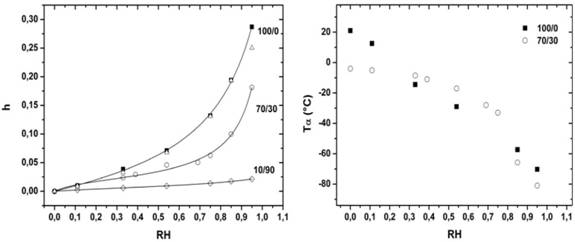
|
Figure 6. (left) Water content h vs relative humidity RH for samples indicated on the plot at room temperature, experimental data (points) fitting to GAB equation (lines). (right) Temperature of maximum depolarization current, Τα, vs relative humidity. From: L. Hartmann, A. Spanoudaki, A. Kyritsis, P. Pissis, R. Pelster, N. Shinyashiki, J. C. Rodriguez Hernandez, J. L. Gomez Ribelles, M. Monleon Pradas, Dielectric studies of molecular dynamics and hydration properties of poly(hydroxy ethyl acrylate)-co-poly(ethyl acrylate) copolymers, Proc. ISEMA 2009, 8th International Conference on Electromagnetic Wave Interaction with Water and Moist Substances, June 2009, Helsinki (Finnland), 8 pages. |
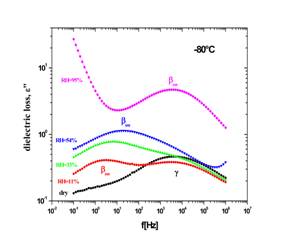
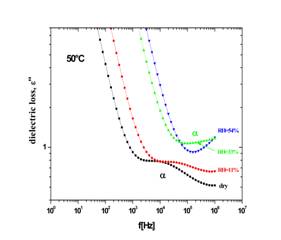
|
Figure 7. Frequency dependence of dielectric losses in 90/10 PHEA-co-PEA hydrogels at two temperatures indicated on the plot and several water contents (relative humidity, RH). From: P. Pissis, A. Kyritsis, G. Gallego Ferrer, M. Monléon Pradas, and J. L. Gómez Ribelles, “Water in Hydrogels Studied by Dielectric, Thermal and Water Sorption/Diffusion Techniques”, Subsurface Sensing Technologies and Applications Vol. 1, No. 4, 2000. |
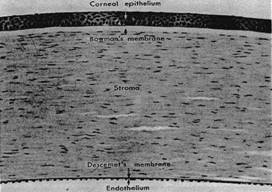
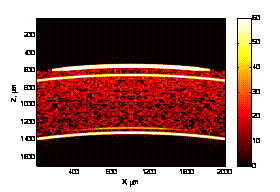


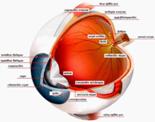
|
Experimental and theoretical data related to BiophysIOL project |
|
(a) |
|
(b) |
|
· In this project, the study of basic biophysical parameters of laser interaction with surfaces of polymeric material (intraocular lenses, IOLs) and ex vivo corneas is proposed. The main aim is to examine the factors which affect the results of modern refractive surgery, as well as to extend the laser procedures for correction of presbyopia and other abnormalities. · The researchers that form the scientific team of this project were involved in the study of partial problems before and they have obtained very interesting experimental evidence for the “Project Concept and Objectives” of this proposal. · Some interesting preliminary results are presented here.
|
|
THALES proposal: “Experimental and theoretical study of biophysical properties and morphology of polymeric intraocular lenses and ophthalmic tissues during laser irradiation for vision improvement - BiophysIOL”. |
|
Εθνικό Μετσόβιο Πολυτεχνείο |
|
Σχολή Εφαρμοσμένων Μαθηματικών και Φυσικών Επιστημών, Τομέας Φυσικής |
|
|
|
|
Figure 4. SEM image of Er:YAG laser ablation of human cornea at 2 J/cm2. |
Figure 5. SEM image of Er:YAG laser ablation of human cornea at 2 J/cm2. The cornea sample was immersed in D2O before laser radiation, in order to study the role of tissue hydration in ablation behavior. |
|
Figure 8. Histology image of human cornea |
Figure 9. Monte Carlo simulation of cornea OCT images: Four-layered cornea with immersion. From: “Monte Carlo modelling of corneal and retinal Optical Coherence Tomography imaging”, A. Gerakis, M.Yu. Kirillin, E.A. Sergeeva, M. Makropoulou, and A.A. Serafetinides, 8th IEEE International Conference on Bioinformatics and Bioengineering - BIBE 2008, pp.1-6, 2008.
|
